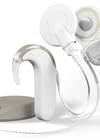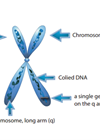Audiology features archive for 2015
Rehabilitation of unilateral sensorineural hearing loss: bone vs air conduction
The re-routing of sound from the deafened ear to the hearing ear has been the mainstay of rehabilitation for SSD for many years. Both hearing aid and bone conduction technology have undergone significant advances over the past decade. This article...
Rehabilitation of single-sided deafness with cochlear implants
The relatively recent emergence of cochlear implantation as a potential means of restoring hearing to a deafened ear, in the presence of normal hearing in the other ear, has proved an exciting and yet surprising development. James Tysome explores the...
A psychophysical perspective on single-sided deafness and its treatment by cochlear implants
Bob Carlyon gives us a psychophysical perspective on the hearing benefits that can and cannot be achieved for patients with single-sided deafness with a cochlear implant, and discusses some of the challenges in maximising the effectiveness of the treatment. He...
When patient choice stands in the way of patient-centredness
In the field of hearing care, there is increasing focus on ensuring patient autonomy and choice. Greater participation in decision making is supposed to result in better patient satisfaction. A study conducted in ENT and audiology clinics paradoxically suggests that...
Three is not a crowd! Involving family members in audiology appointments
Family members currently have minimal involvement in the appointment. Image by Caitlin Grenness. Hearing loss in older adults not only affects the patients themselves, but also their family members. This article outlines the findings of recent research into how family...
Integrating technology into audiological rehabilitation programmes
In the future, the rehabilitation of adults with hearing loss is likely to involve modern information technology. Using the Internet in the audiological rehabilitation process might be a cost-effective way to include additional rehabilitation components by guiding hearing aid users...
The role of significant others in hearing aid adoption
Presbycusis, or age-related hearing loss, is one of the most common conditions affecting older adults and its prevalence is found to increase with age. Over the years, amplification technology has advanced significantly from analogue to digital signal processing. Despite this,...
A cognitive therapy programme for hearing impairment: reducing avoidance and mental distress
Cognitive behavioural therapy (CBT), a psychotherapeutic treatment method, is most commonly used to treat anxiety and depression. Newly published results from a controlled, clinical study demonstrate that an adapted CBT programme is useful for several common challenges in aural rehabilitation;...
Neural plasticity and aural rehabilitation
Neural plasticity refers to an ability of the brain and central nervous system to change their structure and function or their reorganisation in response to environmental cues, experience, learning, behaviour, injury and / or diseases and treatments. Neural plasticity is...
Combined use of a hearing aid and a cochlear implant: a case study
When multi-channel cochlear implants (CIs) were first introduced in the 1980s, their use was restricted to people who derived no benefit from conventional amplification. Over the past three decades, however, the criteria for CIs has been relaxed considerably, and it...
Hearing about genes
I have been fortunate in my career to travel as an invited lecturer at many hospitals, universities and professional societies around the world. I have spoken to audiology societies, otolaryngology societies, and university communication disorders programmes in Europe, Asia, Africa,...
Scientific advances in mapping syndromic hearing loss
From more than 22000 genes that we humans have, approximately 3000 genes are associated with human communication. There are tens of syndromes which have been identified to be accompanied by hearing loss. Disorders of almost every organ of the body...

















